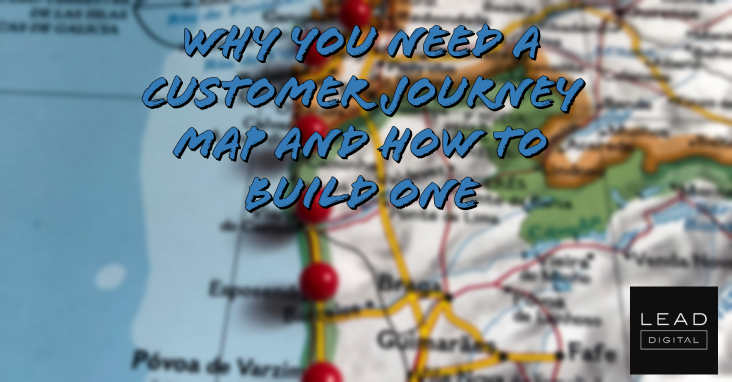
Imagine travelling to a country for the first time by yourself.
Without a guide or some sort of map, you’ll definitely get lost.
The same thing happens when you don’t map out your customers’ journey; you’ll get prospects lost because they won’t find it easy to equate your business to the solution they’re looking for.
Worse, you’ll lose them to competitors who have their customer journey mapped out already. And you’ll understand this better as you proceed with this guide.
Without a customer journey map, you can’t easily plan out the interactions potential customers should have with your business that will convert them into customers. In other words, you can’t engage with your audience, effectively.
And besides that, you won’t be able to easily strategize what they should do after buying your product. Should they be advocating for your business? Should they join an online community of your existing customers? These are some questions you’ll be able to answer with a customer journey map.
But let’s define what it really is – just to be sure we’re on the same page:
What’s a customer journey map?
To put it simply, a customer journey is the process a potential customer goes through before, during, and after making a purchase from you.
It covers all the customer journey stages from the time they hear about your brand through the period they’re considering your product or service, to even after they’ve bought from you.
Unfortunately, your customer’s journey isn’t always linear.
A prospect can visit your site, add a product to cart or start filling your contact form, go through your testimonials page, and leave for days before coming back to finally make a purchase.
To understand this better, let’s look at this example: Mr A needs to buy a pair of affordable, high-quality blue shoes. There are a couple of places (Google, Amazon, etc.) that he could go to start his buying journey, but he chooses Instagram. He searches Instagram, scrolls through the feed, and sees a page that promises what he’s looking for.
Impressed by the product descriptions and their page’s aesthetics, he clicks on their website link and lands on their homepage. Then, he browses through their page and, that’s right, sees a blue shoe.
There, Mr A becomes a customer of the brand he’s bought the product from.
This is an example of a simple customer’s customer journey, and mapping it out visually helps you create your customer journey map.
But a customer journey can be much more complex than this simple illustration we just gave, depending on the nature of your business and the complexity of your product or service.
The image below is an example of a customer journey map; it can be simple or complex based on what you include, the time frame, and your type of company.
By now, you probably have enough reasons why you should be mapping out your customer journey, but if you’re still not certain you need it, here are three other reasons you should consider:
Three major reasons why you need a customer journey map
Smart business owners use customer journey maps. Research reveals that companies using customer journey maps have a 54% greater return on marketing investment than those that don’t.
Even more, the chart below shows a side-by-side comparison of brands that use customer journey maps and others that don’t. You can see that in every area compared, brands that use customer journey have a higher percentage than brands that don’t.
With a good customer journey map, you can:
Reason 1: Improve your customers’ experience
Brands with superior customer experience bring in 5.7 times more revenue than their competitors that don’t.
Since a customer journey map is a visual representation of your customers’ journey, you’d be able to see their experience with your brand and improve on it. When you do this, your customers will have a seamless experience buying from you.
And the more seamless their experience with your brand, the more sales you get; no wonder 43% of all consumers would pay more for greater convenience.
Reason 2: Reduce cost and increase sales
Brands that use customer journey maps reduce costs and increase sales. A study by the Aberdeen Group shows that such brands experience more than 10 times the improvement in customer service costs and a 21% yearly growth, while brands that don’t actually experience a decline in growth at -2.2%.
The same research shows that brands that use customer journey maps enjoy an average sales cycle that is 18 times faster, with 56% more revenue from upselling and cross-selling efforts. – Read more



